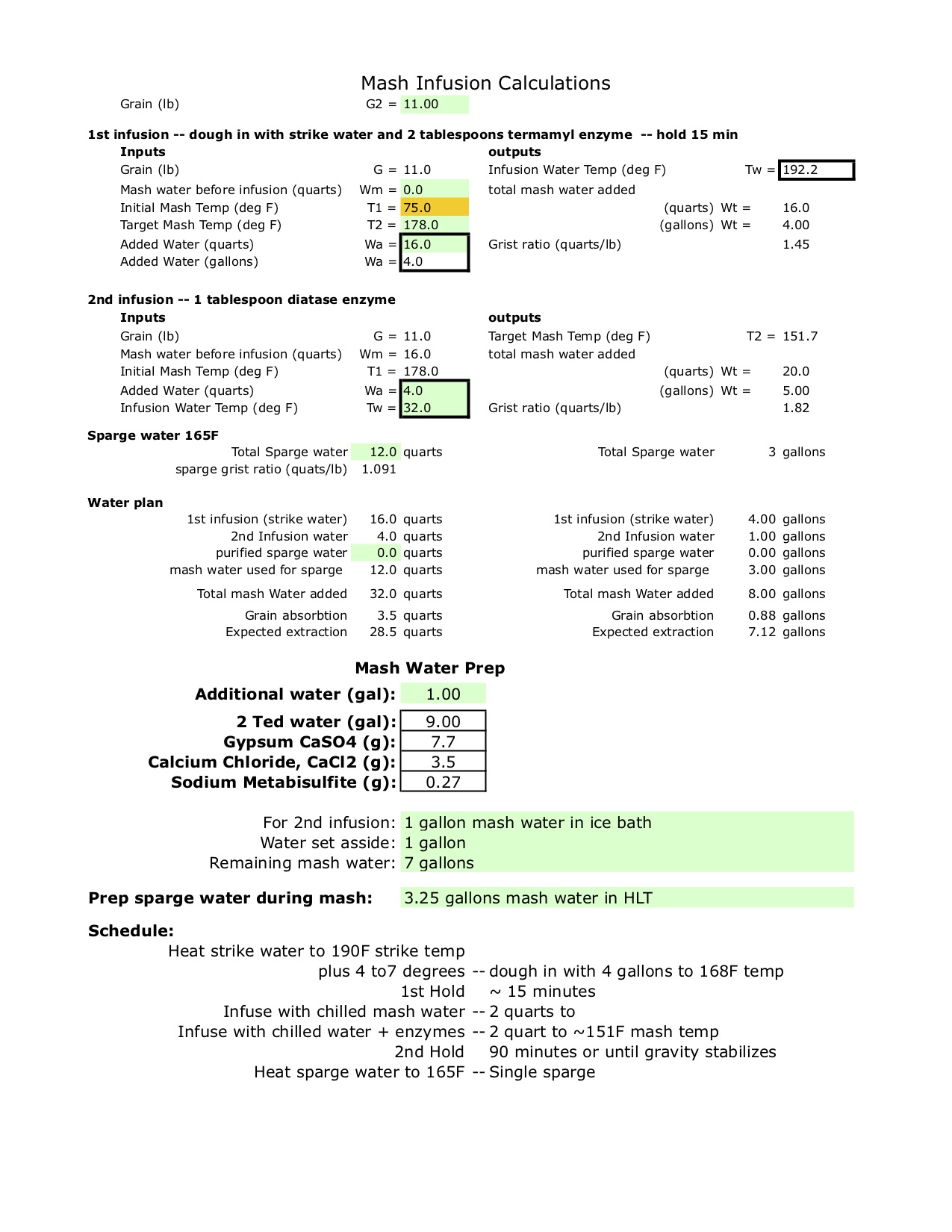glutarded-chris
Well-Known Member
The first batch I did was a GF kit lager (sorghum base). I quickly shifted toward ales because I didn't have a convenient way to keep the carboy cool for the lagering phase. I don't remember there being a huge difference between the lager and the subsequent sorghum based ale batches, but those were early batches and quite "thin". After 60 ale batches, I decided to go back and give a lager yeast another go. Now that I have a fermentation fridge, I was prepared for a long and low temp ferment and lager. With some research I found that the prevailing homebrew method was to ferment cold and then raise up to ~65F for a few days for a diacetyl rest to insure that it finishes and to allow sulfur compounds to escape. Then I read a series of exbeerament articles that were pretty convincing that for certain lager yeasts like Saflager W-34/70, you can essentially ferment at a normal 65F temperature and get a brew that was indistinguishable from one that was fermented initially cold and then brought up to a diacetyl rest.
http://brulosophy.com/2016/02/08/fe...ager-yeast-saflager-3470-exbeeriment-results/
My guess is that if you are going to bring the fermentation up to 65F for any length of time, you get whatever negative effect that comes with that and there is not a huge reason to ferment initially low. Armed with that I did my lager batch.
I went totally base malt and low hop load to get a good feel for yeast effect. I was astonished. Huge difference!
5 Gallon Batch
9 lb pale millet (Grouse)
1.5 lb pale rice (Eckart)
1.5 lb pale Buckwheat (Grouse)
Hops (total calculated IBU=38):
Bittering: 0.5 oz Magnum (14.6% AA) @ 60 min
Flavoring: 0.75 oz Hallertau (4.1% AA) @ 30 min
Aroma: 0.75 oz Hallertau (4.1% AA) @ 15 min
Yeast: Saflager W-34/70 (1.5 sache)
OG: 1.047
FG: 1.006
ABV: ~5.3%
7 days in the primary @ 65F
Cold crashed to 50F and conditioned for 3 weeks.
Full disclosure: My hop bag sprung a leak at the end of the boil and I got some hop matter in the fermenter. I did not want to leave it on that trub for longer than I had to so that is why I racked it after a week to a secondary. Then I went to Europe for two weeks so had to leave it for several weeks in the secondary. Later batches I may just leave it in the primary and keg it after two weeks like I normally do with ales. It was plenty clear after two weeks.
I think I really like it and will now try to dial in a small amount of lightly roasted malts and different hop profile.
http://brulosophy.com/2016/02/08/fe...ager-yeast-saflager-3470-exbeeriment-results/
My guess is that if you are going to bring the fermentation up to 65F for any length of time, you get whatever negative effect that comes with that and there is not a huge reason to ferment initially low. Armed with that I did my lager batch.
I went totally base malt and low hop load to get a good feel for yeast effect. I was astonished. Huge difference!
5 Gallon Batch
9 lb pale millet (Grouse)
1.5 lb pale rice (Eckart)
1.5 lb pale Buckwheat (Grouse)
Hops (total calculated IBU=38):
Bittering: 0.5 oz Magnum (14.6% AA) @ 60 min
Flavoring: 0.75 oz Hallertau (4.1% AA) @ 30 min
Aroma: 0.75 oz Hallertau (4.1% AA) @ 15 min
Yeast: Saflager W-34/70 (1.5 sache)
OG: 1.047
FG: 1.006
ABV: ~5.3%
7 days in the primary @ 65F
Cold crashed to 50F and conditioned for 3 weeks.
Full disclosure: My hop bag sprung a leak at the end of the boil and I got some hop matter in the fermenter. I did not want to leave it on that trub for longer than I had to so that is why I racked it after a week to a secondary. Then I went to Europe for two weeks so had to leave it for several weeks in the secondary. Later batches I may just leave it in the primary and keg it after two weeks like I normally do with ales. It was plenty clear after two weeks.
I think I really like it and will now try to dial in a small amount of lightly roasted malts and different hop profile.





